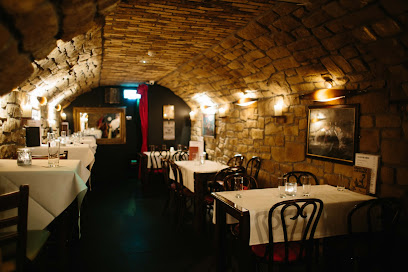
The Custom House: A Historical Gem of Dublin
Discover the architectural beauty and historical significance of The Custom House, a must-visit landmark in Dublin that reflects Ireland's rich heritage.
The Custom House is a stunning architectural landmark in Dublin, blending rich history with governmental function. As a key tourist attraction, it showcases the elegant neoclassical design and serves as a gateway to understanding Ireland's past. Visitors can admire the intricate details of its facade and explore the surrounding area, filled with vibrant culture and history.
A brief summary to The Custom House
- Dublin 1, North Wall, IE
- +35318882000
- Visit website
- Monday 9 am-5 pm
- Tuesday 9 am-5 pm
- Wednesday 9 am-5 pm
- Thursday 9 am-5 pm
- Friday 9 am-5 pm
Local tips
- Check the local schedule for guided tours that provide deeper insights into the building's history.
- Visit during the early morning or late afternoon for the best lighting for photographs.
- Explore the surrounding area for additional cultural attractions and dining options.
Getting There
-
Walking
If you are starting from the Drogheda Train Station, head south on the North Quay towards the bridge. Cross the bridge and take a left onto West Street. Continue straight until you reach the intersection with the M1 Motorway. Turn right onto the M1 and follow it until you reach the town center. From there, continue straight until you see the Custom House on your left, located at North Wall, Dublin 1.
-
Bus
From the Drogheda Bus Station, take Bus Route 100 towards Dublin. Get off at the 'Custom House' stop. After disembarking, walk north on North Wall and you will see the Custom House directly across the street. It is a short 2-minute walk from the bus stop.
-
Cycling
If you have a bicycle, you can ride from the Drogheda town center. Start on the North Quay and follow it along the river. You will have a scenic route as you pedal towards the direction of the North Wall. Once you reach the North Wall area, the Custom House will be on your left. The journey should take around 10-15 minutes, depending on your cycling speed.
Discover more about The Custom House
Iconic landmarks you can’t miss
Custom House Quay
0.2 km
Discover the historic Custom House Quay in Dublin, a vibrant waterfront destination filled with stunning architecture, local culture, and scenic views.

Patrick Sheahan Memorial
0.3 km
Explore the Patrick Sheahan Memorial in Dublin, a historical landmark honoring heritage and culture amidst the vibrant cityscape.

The Linesman
0.3 km
Explore The Linesman, a stunning sculpture in Dublin's Docklands, celebrating the city’s maritime heritage with artistry and cultural significance.
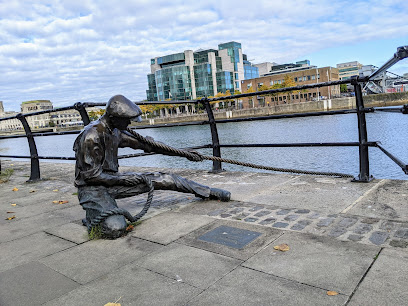
Jim Larkin Statue
0.4 km
Discover the Jim Larkin Statue on O'Connell Street, a powerful symbol of Dublin's labor history and an essential stop for every visitor.
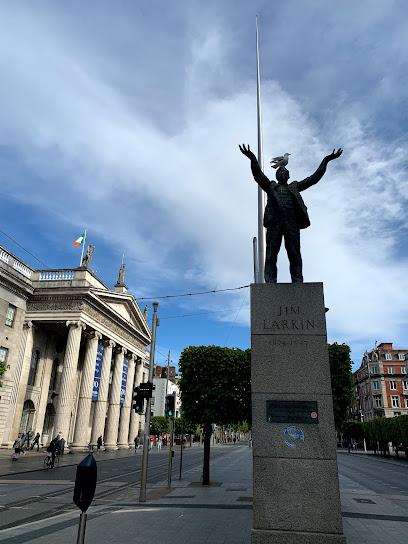
James Joyce Statue
0.4 km
Explore the James Joyce Statue in Dublin, a tribute to the legendary Irish writer, and immerse yourself in the city's rich literary heritage.
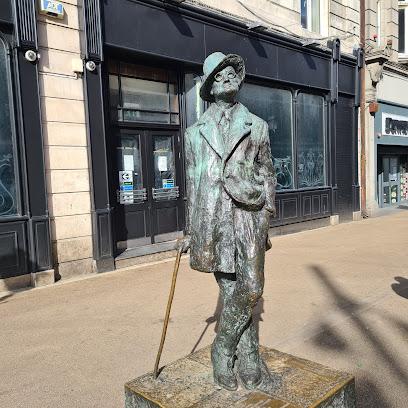
Dublin City
0.5 km
Explore Dublin City, where rich history meets vibrant culture in the heart of Ireland's capital, perfect for every tourist's adventure.
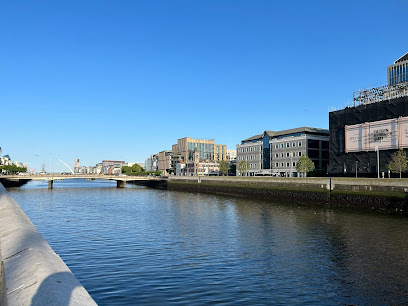
The Spire
0.5 km
Discover The Spire in Dublin: a stunning sculpture that symbolizes the city’s culture and history, set against the vibrant backdrop of O'Connell Street.

GPO Museum
0.5 km
Explore Ireland's rich history at the GPO Museum, a key site of the 1916 Easter Rising, filled with engaging exhibits and touching stories.

The Campanile of Trinity College
0.5 km
Discover the historic Campanile of Trinity College, a stunning monument in Dublin that symbolizes Ireland's rich academic heritage and architectural beauty.
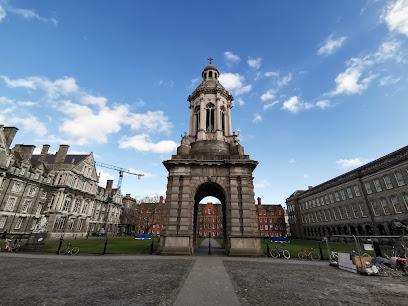
Temple Bar
0.5 km
Discover Temple Bar, Dublin's cultural quarter filled with lively pubs, art galleries, and traditional Irish music, perfect for an unforgettable experience.

Trinity College Dublin
0.5 km
Explore the rich history and stunning architecture of Trinity College Dublin, home of the Book of Kells and a vibrant academic atmosphere.
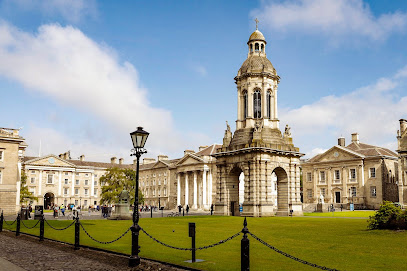
Museum Building (Geology, Geography and Civil Engineering)
0.5 km
Discover the architectural beauty and scientific treasures of the Museum Building at Trinity College, a must-see for every Dublin visitor.
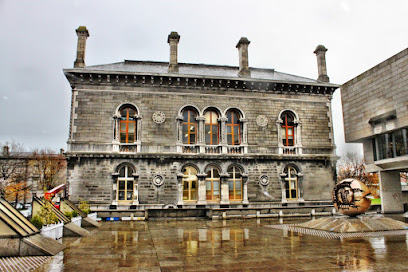
The Book of Kells Experience
0.5 km
Explore the enchanting Book of Kells at Trinity College Dublin, where history, artistry, and culture converge in a captivating experience.
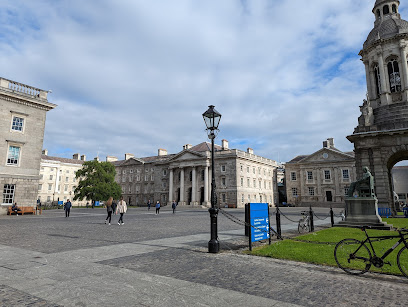
O'Connell Street Upper
0.6 km
Discover the historic and vibrant O'Connell Street Upper in Dublin, where rich culture meets modern life amidst stunning architecture.

Parliament House
0.6 km
Explore Dublin's Parliament House, a historical landmark showcasing stunning architecture and rich Irish heritage, located in the vibrant Temple Bar district.
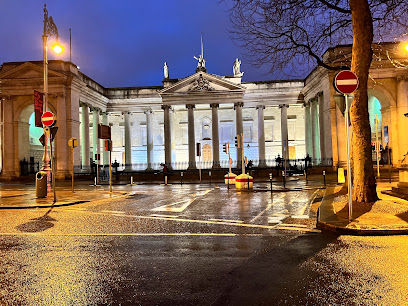
Unmissable attractions to see
Custom House Visitor Centre
0.0 km
Discover the architectural beauty and historical significance of Dublin at the Custom House Visitor Centre, an essential stop for history lovers.
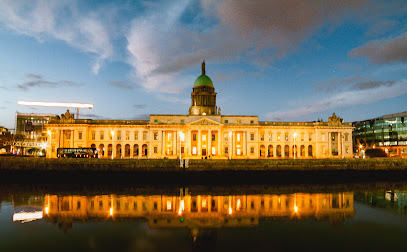
James Connolly Memorial
0.1 km
Explore the James Connolly Memorial in Dublin, a poignant tribute to Ireland's revolutionary spirit and a reflection of the fight for social justice.
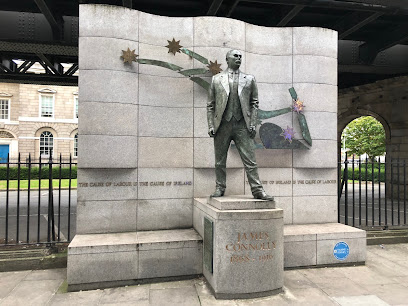
Liberty Hall Theatre
0.1 km
Discover the heart of Dublin's performing arts at Liberty Hall Theatre, an iconic venue offering diverse shows and unforgettable experiences.
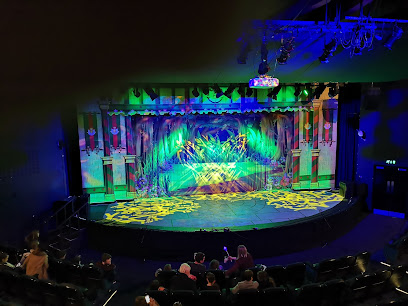
Rosie Hackett Bridge
0.2 km
Discover the Rosie Hackett Bridge, a stunning pedestrian bridge in Dublin that offers breathtaking views and a glimpse into the city's rich history.
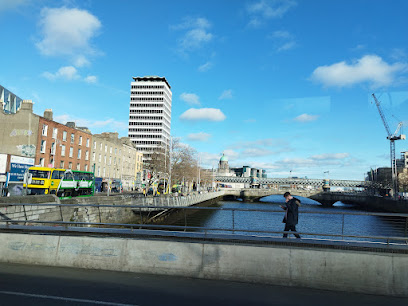
Abbey Theatre
0.2 km
Discover the rich theatrical heritage of Dublin at the Abbey Theatre, Ireland's national theater, showcasing the best of Irish drama and culture.
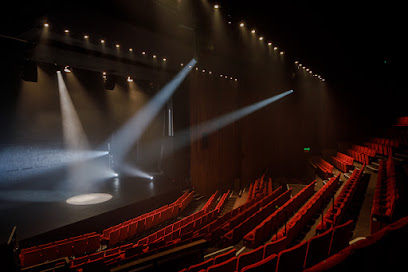
Burgh Quay
0.2 km
Discover Burgh Quay, Dublin's vibrant waterfront hub, where picturesque views meet lively culture and delicious local cuisine.

The Famine Memorial
0.3 km
Explore The Famine Memorial in Dublin, a poignant sculpture reflecting the resilience of the Irish people during the Great Famine.
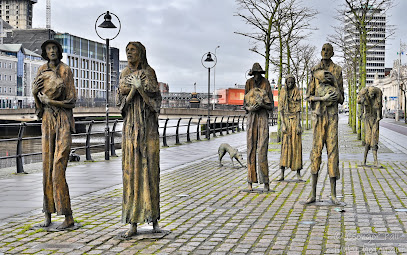
Constance Markievicz and Poppet (1998) by Elizabeth McLaughlin
0.3 km
Explore the Constance Markievicz and Poppet sculpture in Dublin, a tribute to a pioneering figure in Irish history and women's rights.
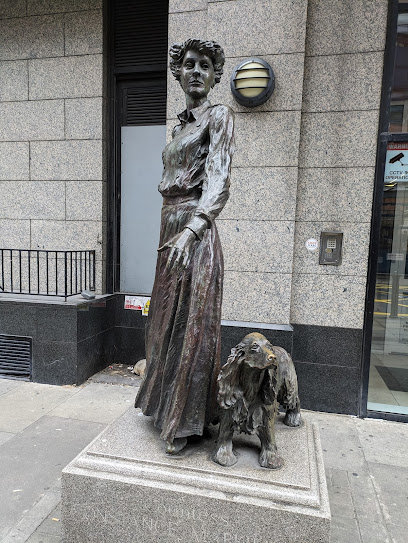
Laughter Lounge
0.3 km
Discover Dublin's lively comedy scene at Laughter Lounge, where laughter knows no bounds and unforgettable performances await.
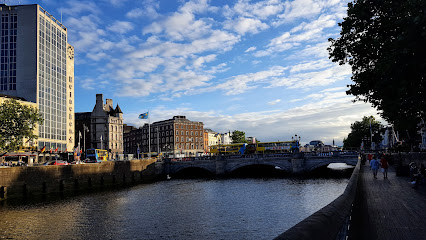
World Poverty Stone
0.3 km
Discover the World Poverty Stone in Dublin, a poignant monument at North Wall that highlights the global fight against poverty amidst stunning riverside views.

Scherzer Rolling Lift Bridges
0.3 km
Experience the architectural wonder of Scherzer Rolling Lift Bridges in Dublin, a blend of beauty and functionality on the River Liffey.
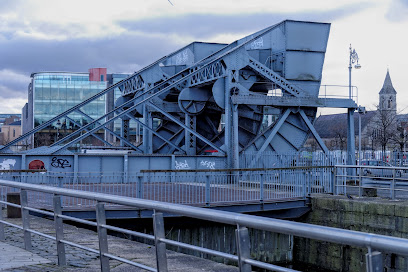
Triumphal Arch
0.4 km
Discover Dublin's Triumphal Arch, a stunning historical landmark that reflects the city's rich heritage and architectural beauty.
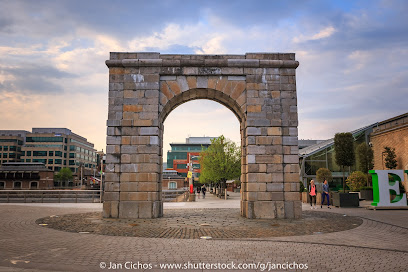
The Steine
0.4 km
Discover The Steine, a stunning sculpture in Dublin that captures the essence of the city's vibrant art scene and cultural heritage.
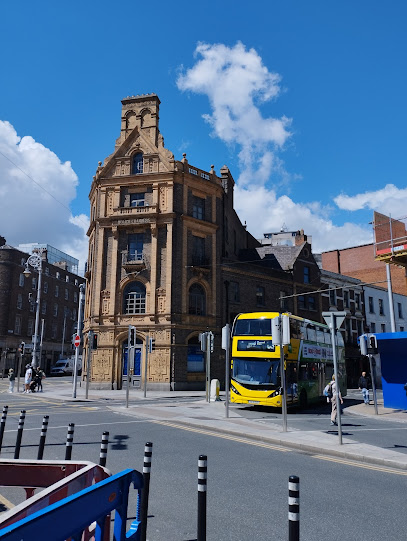
Styne (1986) by Clíodna Cussen
0.4 km
Explore 'Styne', Clíodhna Cussen's captivating sculpture in Dublin 2, a stunning blend of modern art and natural beauty.
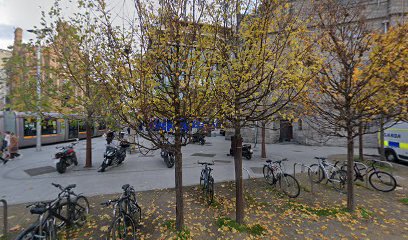
The Confession Box
0.4 km
Experience authentic Irish hospitality at The Confession Box, Dublin's lively pub with traditional dishes and vibrant music culture.
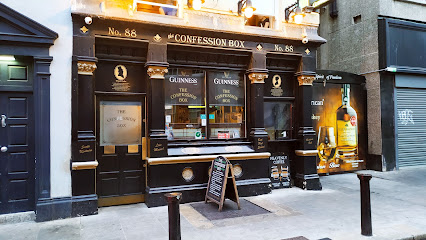
Essential places to dine
The Vintage Kitchen
0.2 km
Discover authentic Irish flavors at The Vintage Kitchen in Dublin, where local ingredients meet warm hospitality.
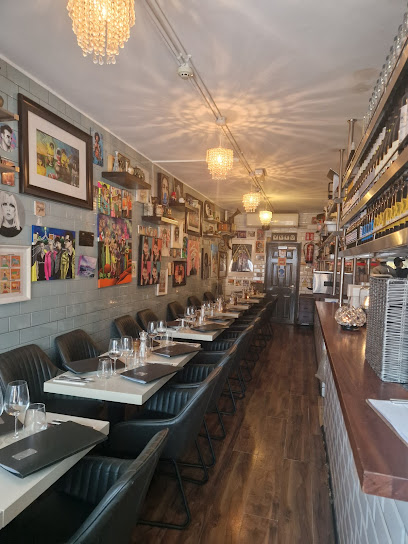
101 Talbot
0.3 km
Discover the flavors of Europe at 101 Talbot, Dublin's premier restaurant offering a delightful dining experience in a warm atmosphere.

D'Olier Street Restaurant
0.3 km
Discover exquisite Irish cuisine at D'Olier Street Restaurant in Dublin - where fine dining meets exceptional service.
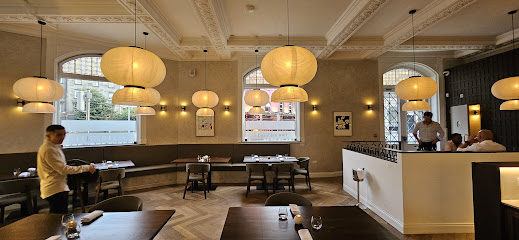
Courtyard Restaurant
0.4 km
Experience authentic Irish cuisine at the Courtyard Restaurant in Dublin's vibrant heart; savor tradition in every bite.
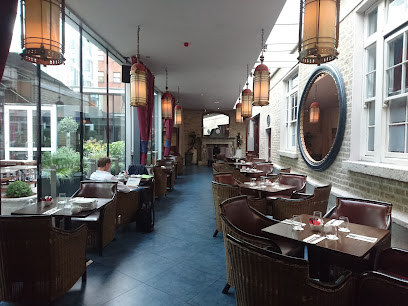
The Buttery
0.4 km
Experience authentic Irish cuisine at The Buttery - a cozy restaurant in Dublin known for its friendly service and budget-friendly prices.
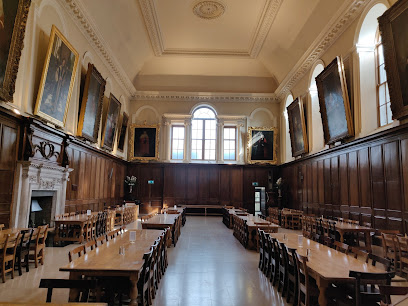
The 1592 Restaurant
0.4 km
Experience exquisite Irish cuisine at The 1592 Restaurant in Trinity College Dublin - where history meets culinary delight.
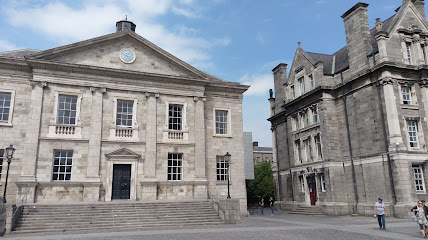
The East Dining Hall
0.4 km
Experience authentic Irish cuisine at The East Dining Hall in Dublin Southside - where tradition meets flavor.
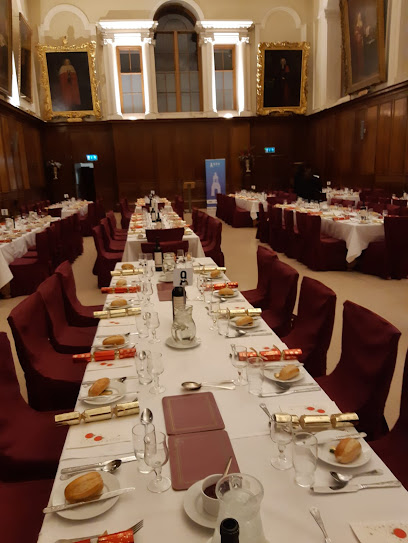
Hawksmoor Dublin
0.6 km
Experience culinary excellence at Hawksmoor Dublin - where premium steaks meet delightful cocktails in a stunning setting.
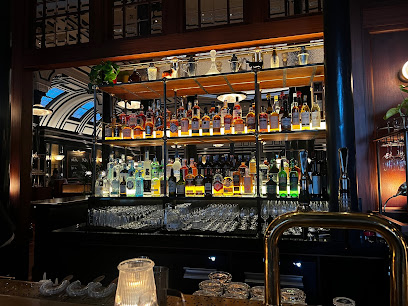
Gallaghers Boxty House
0.6 km
Experience authentic Irish cuisine at Gallaghers Boxty House in Dublin's Temple Bar – where tradition meets flavor.
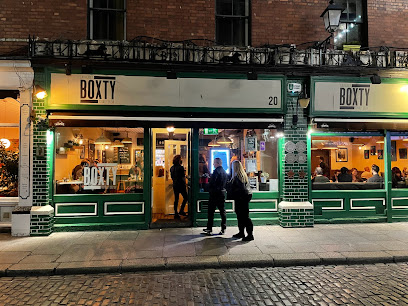
Elephant & Castle
0.6 km
Experience Dublin's culinary delights at Elephant & Castle in Temple Bar—famous for its delicious wings and vibrant atmosphere.
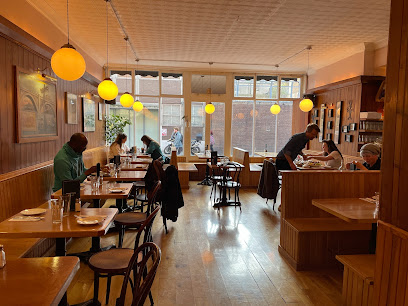
The Woollen Mills
0.7 km
Experience authentic Irish cuisine at The Woollen Mills - where tradition meets modern dining in the heart of Dublin.
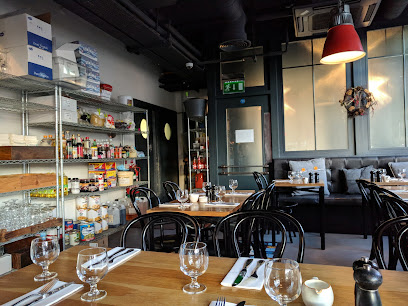
The Winding Stair
0.7 km
Discover authentic Irish cuisine at The Winding Stair in Dublin – where tradition meets modern flair along the River Liffey.

Old Mill Restaurant
0.7 km
Experience authentic Irish cuisine in Dublin's Temple Bar at Old Mill Restaurant - where tradition meets taste.

Pacino's Italian Restaurant
0.7 km
Experience authentic Italian flavors at Pacino's Restaurant in Dublin - where every meal feels like a celebration.
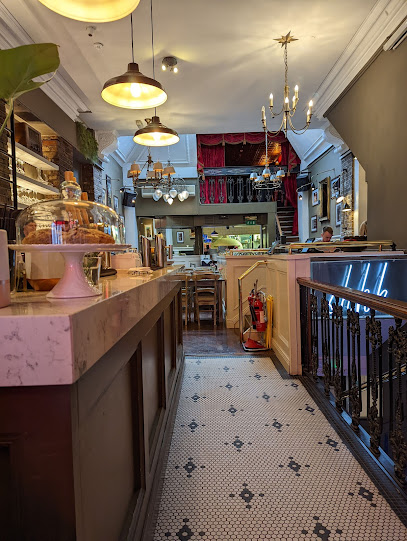
Aperitivo
0.7 km
Experience the best of Italian cuisine at Aperitivo in Dublin – where authentic flavors meet vibrant ambiance.
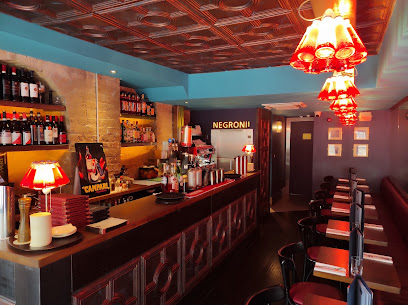
Markets, malls and hidden boutiques
Under The Bridge
0.3 km
Explore Under The Bridge, Dublin’s charming antique store, where unique vintage treasures await every curious traveler.
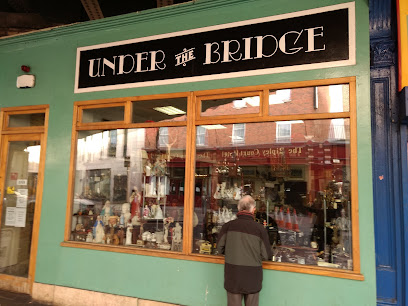
EPIC Museum Gift Shop
0.4 km
Explore the EPIC Museum Gift Shop for unique Irish gifts and souvenirs that showcase the rich heritage of Ireland.
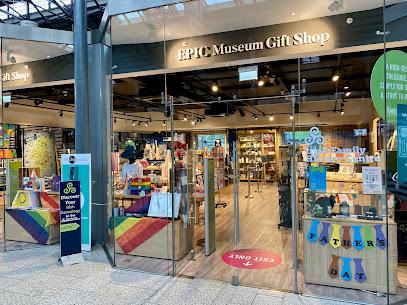
The shop of nice things
0.5 km
Explore The Shop of Nice Things in Dublin, where unique gifts and home goods embody the charm and creativity of Irish craftsmanship.
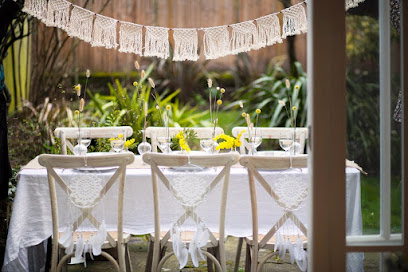
Bears and Co
0.5 km
Explore the charm of Dublin through unique souvenirs and local artisan treasures at Bears and Co, your go-to gift shop in North City.

The Irish Store
0.5 km
Discover The Irish Store in Dublin, where authentic Irish goods, clothing, and jewelry await to enrich your travel experience.
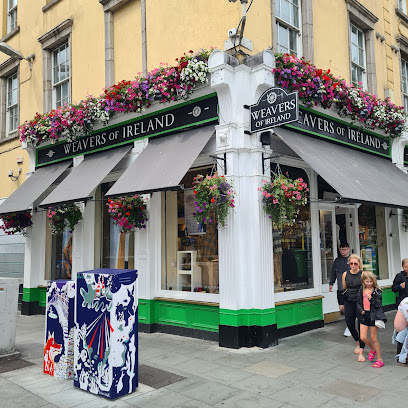
Trinity Gift Shop
0.5 km
Discover unique Irish gifts and souvenirs at Trinity Gift Shop, nestled in the historic Trinity College Dublin, a must-visit for every traveler.

Carrolls Irish Gifts
0.5 km
Explore Carrolls Irish Gifts in Dublin for an unparalleled selection of authentic Irish souvenirs and gifts, capturing the heart of Ireland.
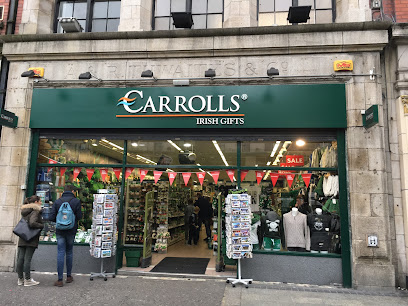
The House of Names
0.6 km
Explore your heritage at The House of Names, a unique gift shop in Dublin offering personalized family crests and Irish heritage gifts.
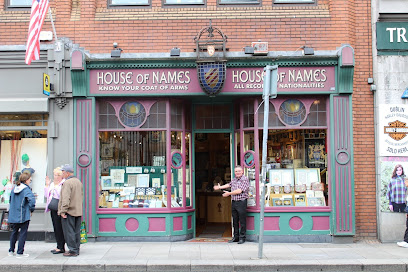
House of Names
0.6 km
Explore your heritage and find unique family crests at the House of Names in Dublin's historic Temple Bar district.

Seasons of Ireland
0.7 km
Explore authentic Irish gifts and souvenirs at Seasons of Ireland, a charming gift shop in the heart of Dublin's Grafton Street.
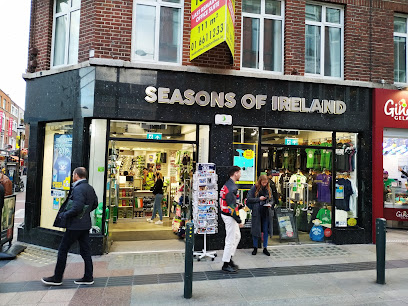
Golly Gosh Vintage Boutique Dublin
0.7 km
Discover unique vintage treasures at Golly Gosh Vintage Boutique in Dublin's vibrant Temple Bar, a must-visit for fashion lovers and treasure hunters.
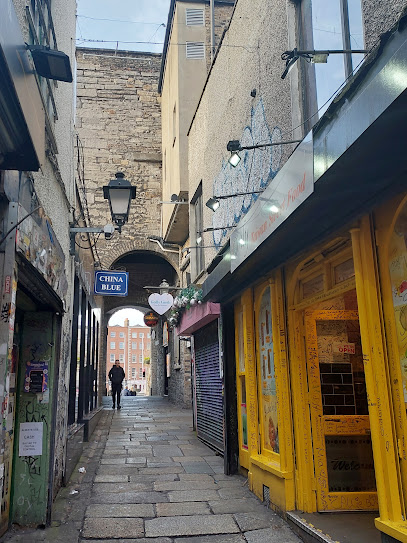
dublin vintage factory
0.7 km
Explore Dublin Vintage Factory for an unforgettable shopping experience filled with unique vintage clothing and accessories in the heart of Temple Bar.
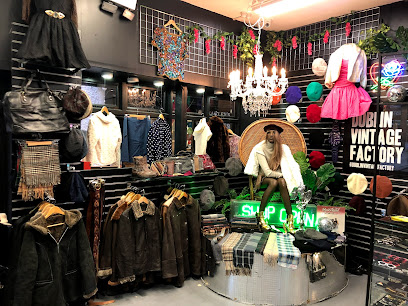
The Big Smoke Vintage
0.7 km
Discover a treasure trove of vintage clothing and accessories at The Big Smoke Vintage in Dublin's iconic Temple Bar district.
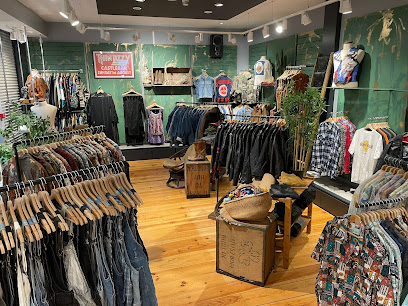
Kilkenny Design
0.7 km
Explore Kilkenny Design, Dublin's premier destination for authentic Irish goods, delightful café experiences, and unique local craftsmanship.
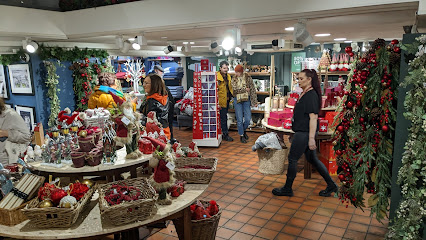
Magne
0.7 km
Discover Magne, a boutique gift shop in Dublin's Temple Bar, offering unique Irish crafts and souvenirs that capture the essence of local culture.
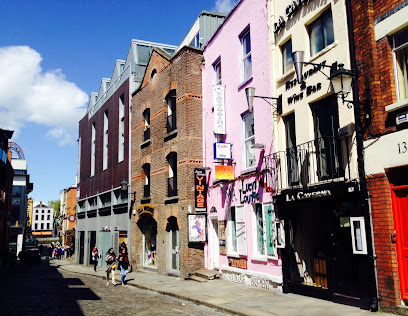
Essential bars & hidden hideouts
Doyle's
0.4 km
Experience the essence of Dublin's pub culture at Doyle's - a lively haven for food, drinks, and unforgettable memories.
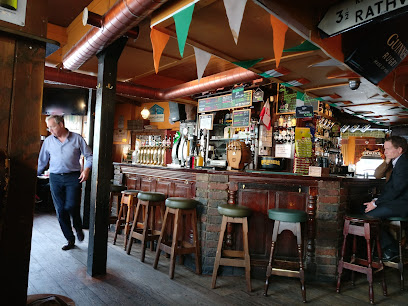
O'Neills Victorian Pub & Townhouse
0.4 km
Discover the vibrant spirit of Dublin at O'Neills Victorian Pub & Townhouse, where traditional Irish cuisine meets lively entertainment.
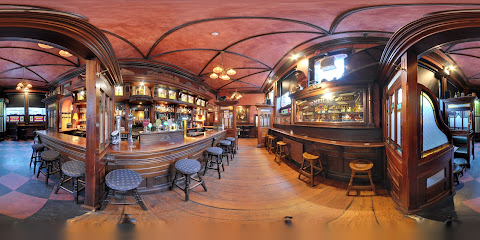
The Palace Bar
0.5 km
Experience the charm and warmth of The Palace Bar, a historic Irish pub in Dublin's vibrant Temple Bar district, perfect for locals and travelers alike.
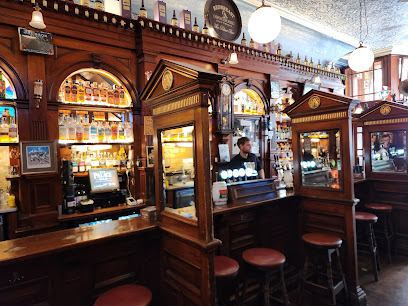
r.i.o.t.
0.6 km
Discover the lively atmosphere of r.i.o.t. in Dublin’s Temple Bar, where vibrant nightlife meets delicious drinks in a stylish setting.
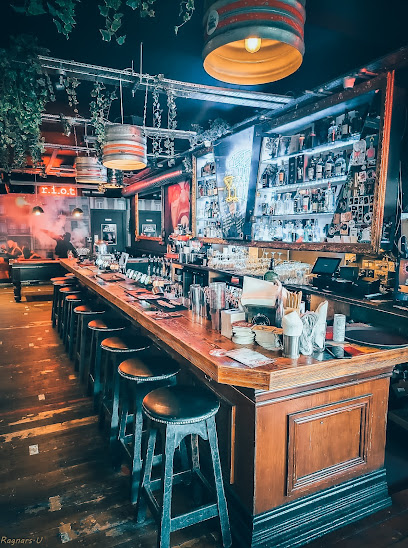
Oliver St. John Gogartys
0.6 km
Discover the essence of Irish culture at Oliver St. John Gogartys, where live music, great food, and friendly vibes await you in Dublin's Temple Bar.
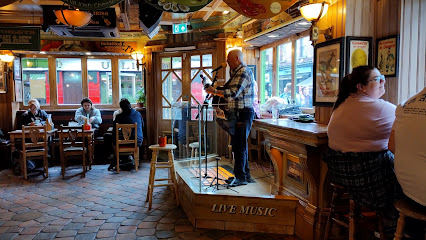
The Auld Dubliner
0.6 km
Discover the authentic Irish pub experience at The Auld Dubliner in Dublin's vibrant Temple Bar district, where live music and warm hospitality await.
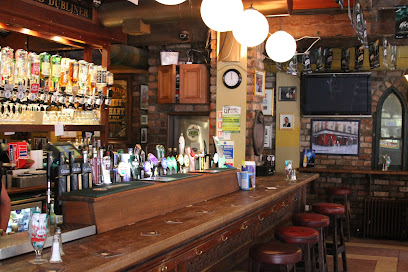
Gin Palace Dublin
0.6 km
Discover the vibrant atmosphere and unique gin selection at Gin Palace Dublin, where traditional pub culture meets modern taste.
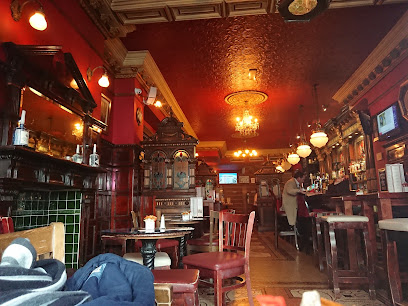
Pavilion Bar
0.6 km
Discover the vibrant Pavilion Bar in Dublin, where affordable drinks and a lively atmosphere await in the heart of the city.
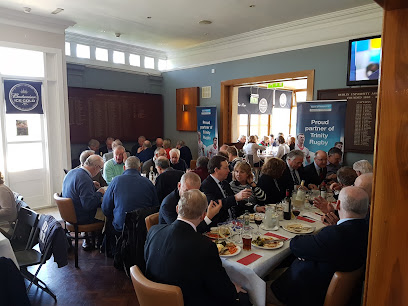
The Big Romance
0.7 km
Experience Dublin's nightlife at The Big Romance, a cocktail bar with live music, eclectic vibes, and an unforgettable atmosphere.
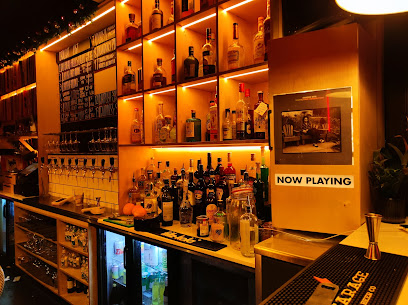
O'Donoghue's Bar
0.7 km
Experience the heart of Dublin at O'Donoghue's Bar, where traditional Irish hospitality meets vibrant live music and delicious cuisine.
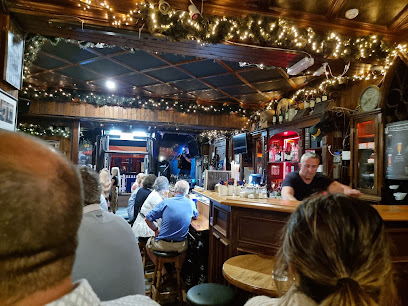
O'Neills Pub & Kitchen
0.7 km
Discover the heart of Dublin at O'Neills Pub & Kitchen, where traditional Irish cuisine meets a vibrant atmosphere in the city's cultural hub.
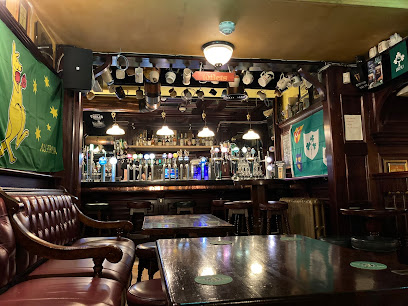
The Parnell Heritage Pub & Grill
0.7 km
Discover the heart of Dublin at The Parnell Heritage Pub & Grill, where traditional Irish cuisine meets a vibrant pub atmosphere.
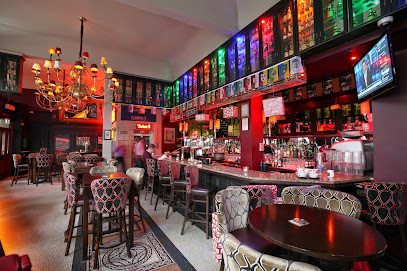
The Ha'penny Bridge Inn
0.7 km
Experience the vibrant nightlife of Dublin at The Ha'penny Bridge Inn - a lively bar and comedy club in the heart of Temple Bar.
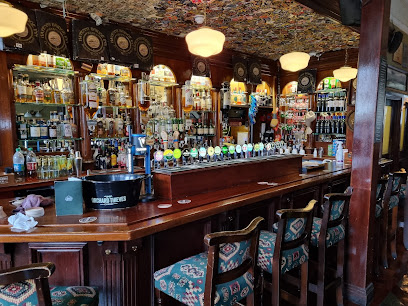
Tapped Late Bar
0.7 km
Discover the lively Tapped Late Bar in Dublin, where great drinks and vibrant ambiance meet for an unforgettable night out.
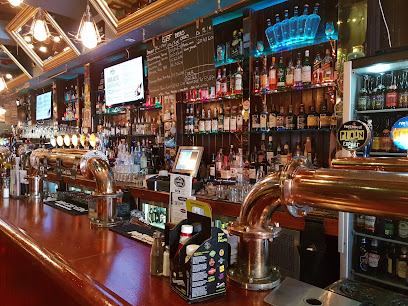
The Blind Pig Speakeasy
0.7 km
Experience the charm of the 1920s at The Blind Pig Speakeasy, Dublin's premier cocktail bar known for its innovative drinks and vibrant atmosphere.
